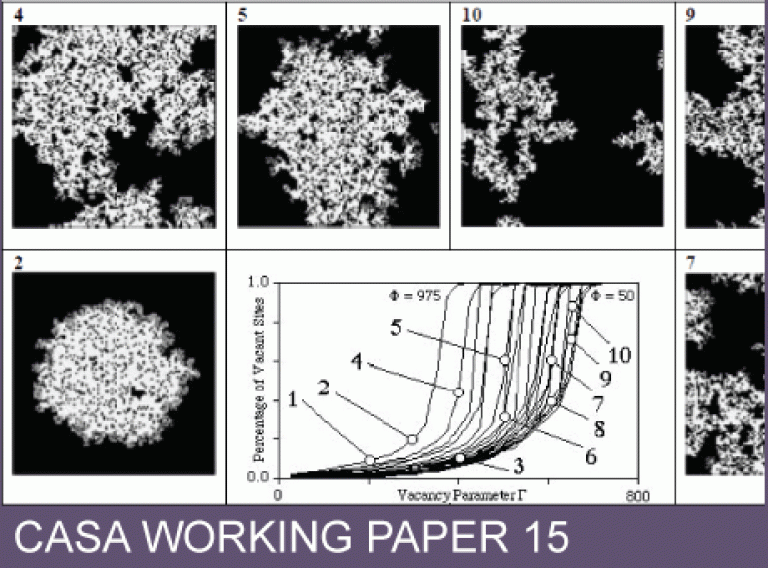CASA Working Paper 15

1 November 1999
Dynamics of Urban Sprawl
This paper introduces a framework for understanding the dynamics of urban growth, particularly the continuing problem of urban sprawl. The models we present are based on transitions from vacant land to established development. We propose that the essential mechanism of transition is analogous to the way an epidemic is generated within a susceptible population, with waves of development being generated from the conversion of available land to new development and redevelopment through the aging process.
We first outline the standard aggregate model in differential equation form, showing how different variants (including logistic, exponential, predator-prey models) can be derived for various urban growth situations. We then generalize the model to a spatial system and show how sprawl can be conceived as a process of both interaction/reaction and diffusion. We operationalize the model as a cellular automata (CA) which implies that diffusion is entirely local, and we then illustrate how waves of development and redevelopment characterizing both sprawl and aging of the existing urban stock, can be simulated. Finally we show how the model can be adapted to a real urban situation - the Ann Arbor area in Eastern Michigan - where we demonstrate how waves of development are absorbed and modified by particular historical contingencies associated with the pre-existing urban structure.
This working paper is available as a PDF. The file size is 940KB.
Authors: Michael Batty, Yichun Xie, Zhanli Sun
Publication Date: 1/11/1999
 Close
Close

